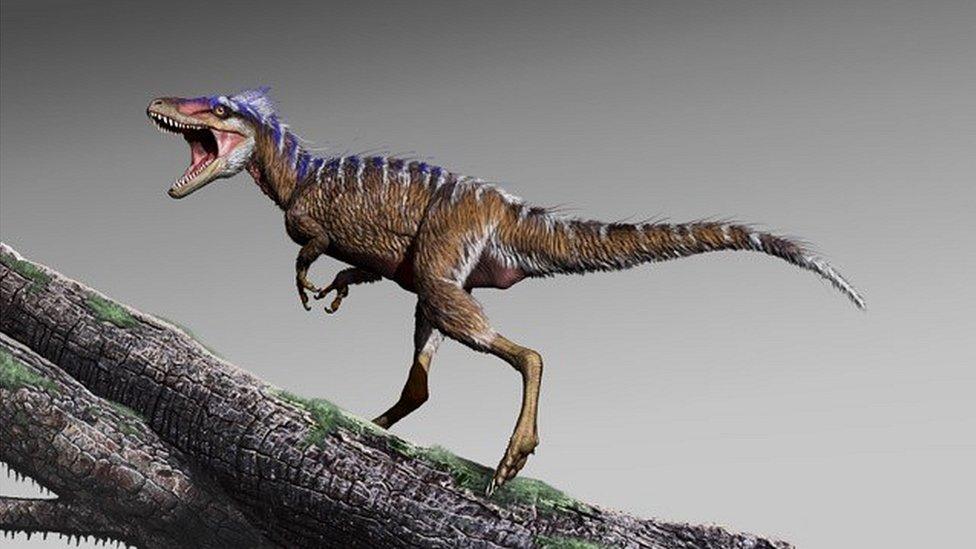Dinosaur skin impression goes on show at Tring museum
- Published
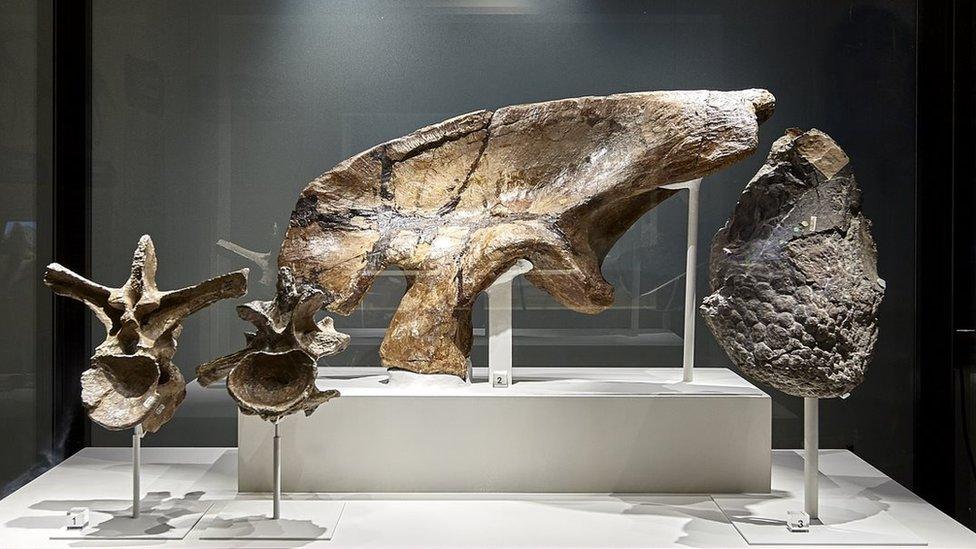
Evidence such as skin imprints are important because they give "better, more precise ideas about the actual biology" of the animals, the museum said
A dinosaur skin impression found 150 years ago has gone on display for what is believed to be the first time.
The fossilised haestasaurus imprint is among 15 dinosaur specimens at the Natural History Museum in Tring, Hertfordshire.
Many of them are being seen by the public for the first time since being unearthed in the mid-19th Century.
The museum said the skin impression had given people an idea what dinosaurs looked like on the outside.
Other items on display include an iguanodon leg and pantydraco bones.
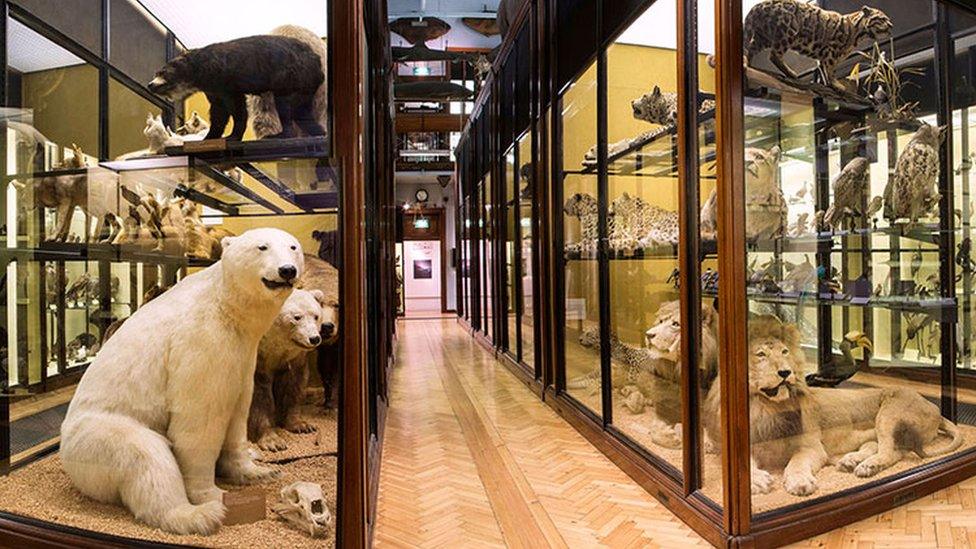
The Natural History Museum in Tring, built in 1889, houses one of the largest private natural history collections
Prof Paul Barrett, the museum's dinosaur researcher, said: "These finds would have been greeted with a huge amount of public excitement.
"The skin find only came about 20 to 25 years after it was decided that dinosaurs were these big extinct reptiles so [the finds] just fed the fervour about these huge animals, what they were and gave a real impression of what they would have been like.
"We think it's probably the first time they've been on display... we have to say probably as they may have been on display in the Victorian era, but we're fairly sure that most of these haven't - not within living memory anyway."
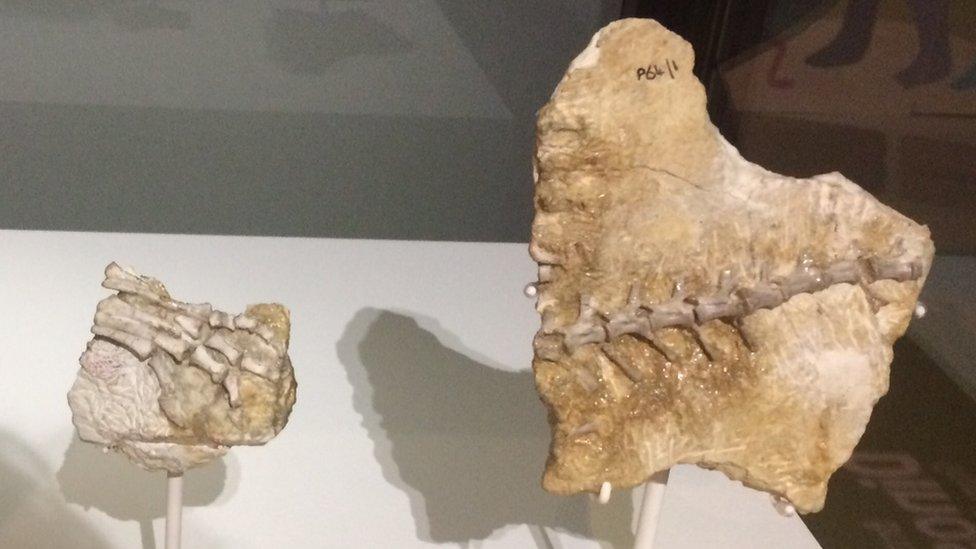
Bones from the pantydraco are about 210 million years old
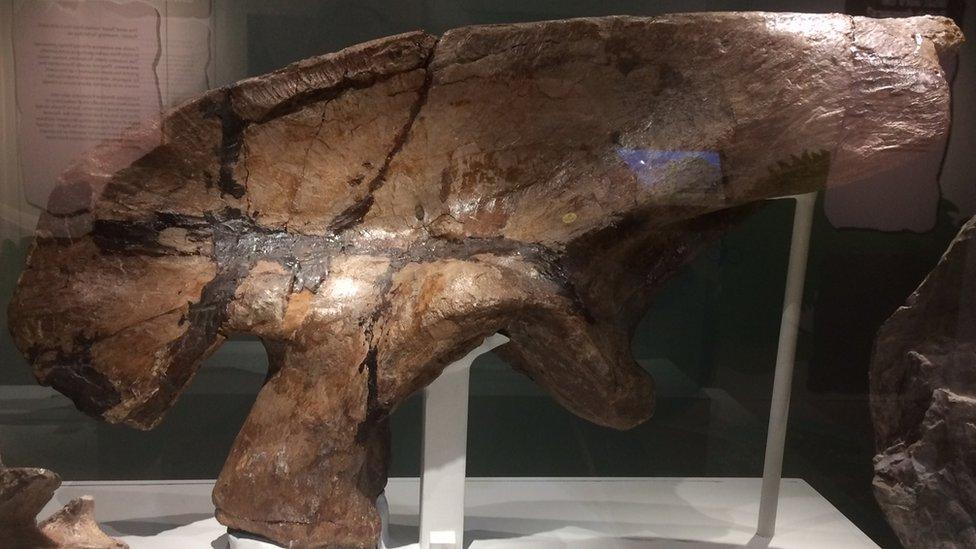
A hip bone from a megalosaurus was worked on by the museum's founder Sir Richard Owen
The museum said the skin impression was one of only three pieces of the haestasaurus ever found.
They were discovered in 1852 by Gideon Mantell, whose collection came to the museum when he died.
"It's an impression of the skin made in the rock that was surrounding the animal as it died," Prof Barrett said.
"It would have been the first time we really got any idea of what the outsides of these animals looked like rather than just having their bones."

Dinosaurs
Dinosaurs lived on Earth for about 245 million years
All non-avian dinosaurs went extinct about 66 million years ago
There are roughly 700 known species of extinct dinosaurs
Source: American Museum of Natural History

- Published29 March 2019

- Published25 March 2019
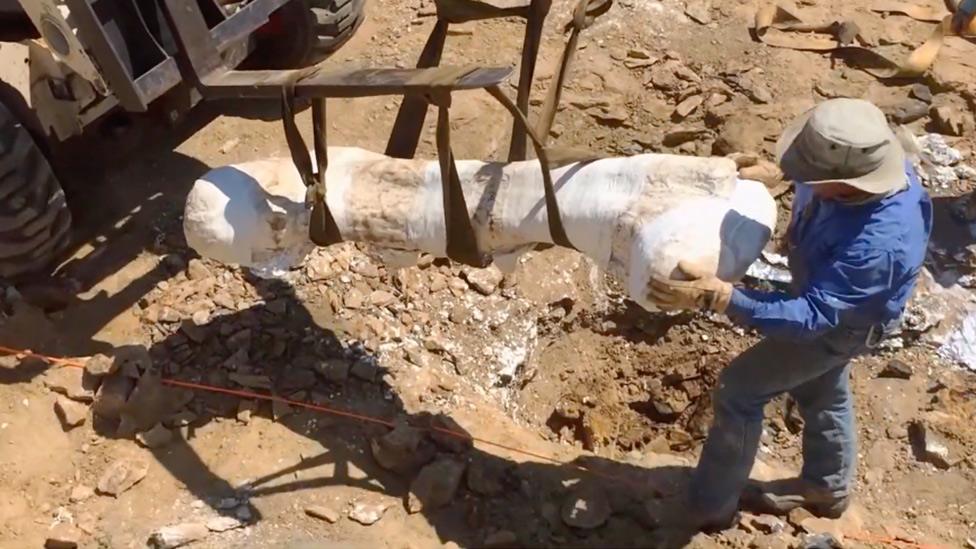
- Published21 February 2019
